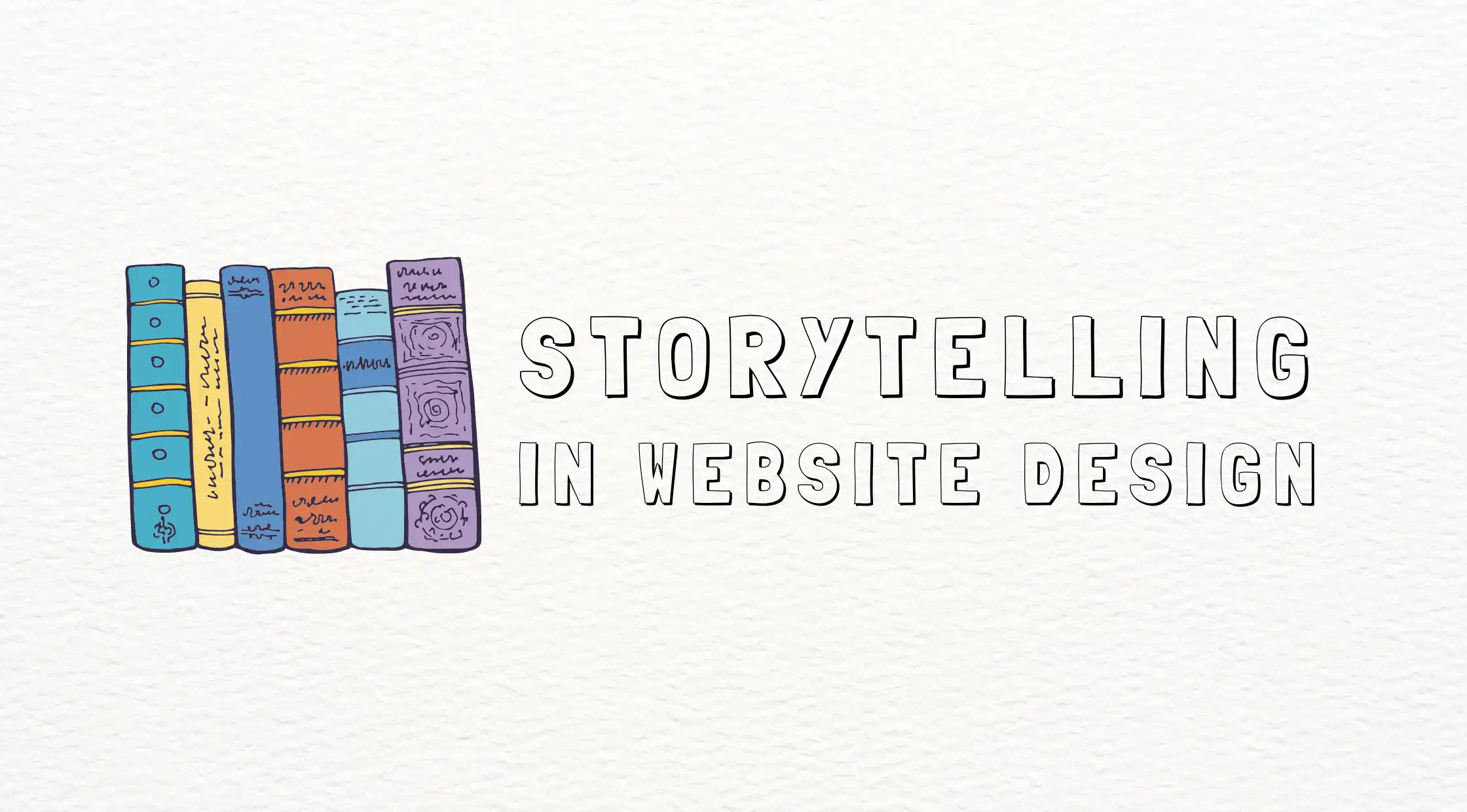Storytelling in Website Design
The Art of Storytelling in Website Design: Weaving Digital Narratives
In the digital age, where attention spans are shorter than ever, and competition for engagement is fierce, storytelling has emerged as a powerful tool for captivating audiences and creating meaningful connections. As the world is increasingly interconnected, websites have evolved from mere informational hubs to immersive digital experiences. The marriage of storytelling and website design has become a compelling strategy for businesses and creators to engage visitors and leave a lasting impact. In this blog, we will explore storytelling in website design, its benefits, and effective techniques to craft compelling digital narratives.
Contact Us Today!
Contact usThe Power of Storytelling in Website Design
In the dynamic landscape of digital communication, where attention spans are fleeting, and information overload is a constant challenge, the power of storytelling has emerged as a transformative force in website design. Storytelling, an age-old art form deeply ingrained in human culture, has found new resonance in the digital realm. It's not just about telling stories anymore; it's about weaving narratives that captivate, engage, and forge meaningful connections. In this exploration, we delve into the profound impact of storytelling in website design, uncovering its underlying mechanisms, benefits, and strategies that empower brands to create immersive and resonant online experiences.
The Alchemy of Storytelling and Design
At its core, storytelling in website design is the convergence of two art forms: the art of crafting narratives and the art of visual design. It's the alchemy that occurs when words, visuals, and interactions seamlessly intertwine to create an emotional journey for the user. This integration is not accidental; it's deliberate and purposeful to foster a deep and lasting connection with the audience.
Emotional Engagement Stories
have the exceptional ability to evoke emotions. When users land on a website and encounter a well-crafted narrative, they are likelier to feel empathy and connection. This emotional engagement captures their attention and makes the website memorable. By tapping into users' emotions, websites can leave a lasting impact, influencing their decision-making and encouraging them to take desired actions.
Building a Connection
In a world saturated with information, it can be challenging for websites to stand out. Storytelling helps bridge this gap by providing a relatable and human element. When users connect with the characters, experiences, or challenges presented in a story, they are more likely to resonate with the website's content and purpose. This connection enhances user trust and fosters a sense of authenticity, which is essential for building meaningful relationships.
Transformatting Values and Messages
Website design isn't just about aesthetics; it's also a platform to communicate values and messages. Through storytelling, websites can effectively convey their mission, vision, and core principles. Whether it's a nonprofit advocating for a cause or a brand promoting sustainability, weaving these messages into a narrative can make them more compelling and memorable, motivating users to align with the website's goals.
Simplifying Complex Information
Some topics can be intricate and challenging to understand. Storytelling simplifies complex concepts by breaking them down into relatable scenarios. By presenting information within the context of a story, websites can make content more accessible and understandable, ensuring that users engage with and retain key messages.
The Elements of Storytelling in Website Design
Crafting a compelling digital narrative involves carefully blending visual, textual, and interactive elements. Let's delve into the key components contributing to effective website design storytelling.
Visual Storytelling
The visual elements of a website are often the first to capture a visitor's attention. Incorporating visual storytelling through images, videos, and graphics can set the tone for the narrative. High-quality visuals that align with the story's theme enhance user engagement and create an immersive experience.
Imagery and Graphics
Selecting the right images and graphics is crucial for conveying the intended message. Visuals should complement the story and evoke emotions that resonate with the audience. Whether it's a series of images depicting a journey or graphics illustrating a process, every element should contribute to the overall narrative.
Videos and Animations
Videos and animations are dynamic tools that can enhance storytelling. Videos can introduce characters, explain concepts, or showcase real-life scenarios, making the story more relatable and engaging.
Compelling Copywriting
While visuals are important, the text on a website plays a pivotal role in conveying the narrative. Well-crafted copywriting guides users through the story, provides context, and elicits emotions.
Captivating Headlines
The headline is the first point of contact users have with the story. A captivating headline sets the tone and piques curiosity, compelling users to continue reading. It should encapsulate the essence of the narrative and encourage users to delve deeper.
Storytelling Voice
The voice and tone of the writing should align with the story being told. Consistency is key, whether casual, conversational tone or a more formal approach. The writing style should resonate with the target audience and contribute to the overall atmosphere of the narrative.
Character Development
Incorporating characters into the narrative adds a human element that users can connect with. Effective character development involves providing background information, motivations, and relatable traits. Users should feel invested in the characters' journeys, fostering a sense of empathy and engagement.
Interactive Experiences
Interactivity elevates storytelling to a new level by allowing users to engage with the narrative actively. Interactive elements encourage exploration and create a sense of agency, making users feel part of the story.
Parallax Scrolling
Parallax scrolling is a technique that creates depth by moving different webpage elements at varying speeds. This adds a visually captivating dimension to the narrative, enhancing the storytelling experience. The story unfolds layer by layer as users scroll, providing a seamless and engaging journey.
User Choices and Branching Narratives
For a more immersive experience, websites can incorporate branching narratives that allow users to make choices that influence the story's outcome. This gamified approach increases user engagement and encourages repeated visits to explore different paths.
Microinteractions
These small interactions add a layer of interactivity to the narrative, keeping users engaged and providing feedback for their actions.

Benefits of Storytelling in Website Design
The fusion of storytelling and website design yields a plethora of benefits that extend beyond aesthetics. Here are some compelling reasons brands embrace storytelling as a pivotal design strategy.
Enhanced User Engagement
In a sea of websites competing for attention, storytelling is a beacon that captivates users' focus. Engaging narratives keep users on the website longer, reducing bounce rates and increasing page views. The emotional connection forged through storytelling encourages users to explore beyond the surface, diving deeper into the content.
Improved Brand Recall
When users connect emotionally with a narrative, they will remember the brand more. This heightened brand recall is a powerful asset in a world where consumers are bombarded with information from all directions.
Effective Communication of Complex Ideas
Some concepts are inherently complex and difficult to convey. Storytelling simplifies the communication of these ideas by placing them within relatable scenarios. Users are more likely to grasp intricate concepts when presented as part of a story. This is particularly beneficial for industries dealing with technical or abstract subjects.
Building a Cohesive Brand Identity
A narrative isn't just a one-time affair; it can be a cornerstone for a brand's identity. Brands can use their narratives as foundational elements in marketing campaigns, social media strategies, and content creation. Consistently incorporating the narrative across various platforms reinforces brand identity and messaging.
Best Practices for Implementing Storytelling in Website Design
Crafting a compelling narrative within a digital landscape requires a thoughtful approach. Here are some best practices to consider when integrating storytelling into website design:
Know Your Audience
Comprehending your target audience is essential for effective storytelling. Research their preferences, demographics, and interests to tailor the narrative to their needs. A story that resonates with the audience will more likely capture their attention and foster engagement.
Maintain Consistency
Consistency in design, tone, and messaging is crucial for a seamless storytelling experience. All website elements should work together harmoniously to convey the narrative cohesively. Inconsistencies can disrupt the user's immersion and lead to confusion.
Prioritize Usability
While storytelling is important, usability should never be compromised. The narrative should enhance the user experience, not hinder it.
Incorporate Calls to Action
A well-designed narrative can guide users towards specific actions, whether signing up for a newsletter, purchasing, or exploring related content. Integrate clear, strategically placed calls to action that align with the story's purpose.
Test and Iterate
Implementing storytelling in website design is an iterative process. Continuously gather user feedback and analyze metrics to understand what works and needs improvement. Make adjustments based on insights to create a more compelling narrative over time.
Case Studies: Inspiring Examples of Storytelling in Website Design
To further illustrate the impact of storytelling in website design, let's explore a few real-world examples:
Patagonia
Their website seamlessly integrates storytelling with their brand values. They share stories of adventurers, activists, and initiatives that align with their mission through engaging visuals and compelling copy. Users are drawn into the narrative and inspired to support the brand's environmental efforts.
The Boat
"The Boat" is an interactive web-based story showcasing digital storytelling's potential. Created by visual artist Nam Le, the website takes users through a narrative that adapts based on user choices. This immersive experience demonstrates the power of branching narratives and user agency in storytelling.
NASA's Exoplanet Exploration
NASA's Exoplanet Exploration website combines visual storytelling and educational content. Users learn about exoplanets and NASA's exploration efforts through interactive animations and engaging visuals. The website effectively simplifies complex astronomical concepts, making them accessible to a broad audience.
Airbnb: Stories from the Community
Airbnb's "Stories from the Community" section features narratives from hosts and guests. These personal stories humanize the brand and showcase the unique experiences that Airbnb enables. By highlighting real people and their journeys, Airbnb establishes an emotional connection with its audience.
Google Year in Search
Every year, Google releases its "Year in Search" website, summarizing the world's most significant events and moments. Through a combination of visuals, videos, and interactive elements, Google transforms data into a captivating narrative that reflects the collective experiences of the year.
Slack: Customer Stories
Slack's website features customer stories illustrating how their platform transforms teams' communication. Each story delves into the challenges faced by different organizations and how Slack played a pivotal role in overcoming them. The narratives demonstrate real-world applications of the product, enhancing its value proposition.
Conclusion
As the digital landscape continues to evolve, storytelling and website design fusion offer a dynamic way to engage users and create lasting impressions. By harnessing the emotional power of narratives, websites can transcend their functional role and become immersive experiences that resonate with visitors. Whether through visual elements, compelling copy, or interactive features, effective website design storytelling can shape perceptions, inspire actions, and foster meaningful connections in an increasingly interconnected world. Published by MS IT Park


.webp)
.png)
.webp)
